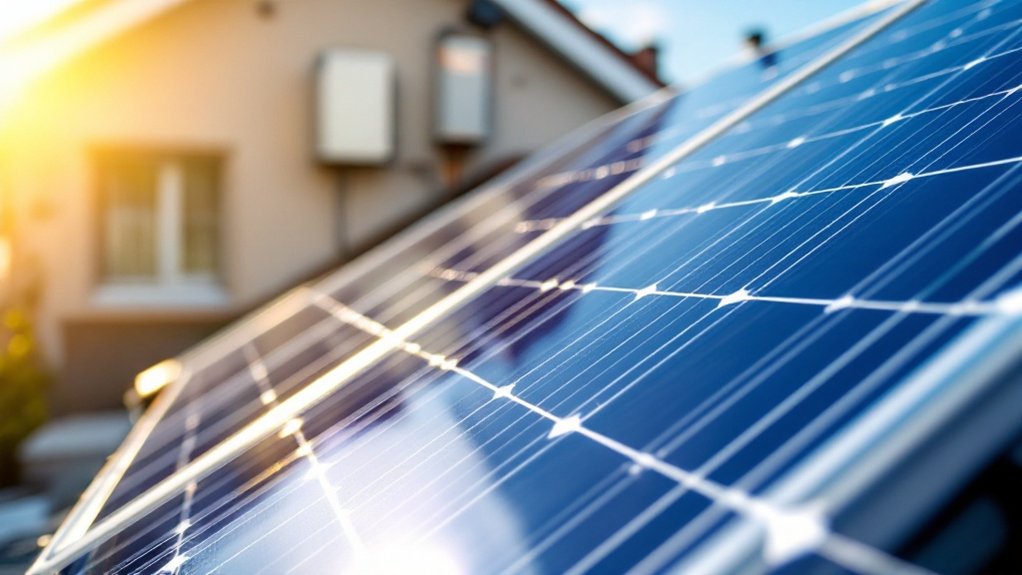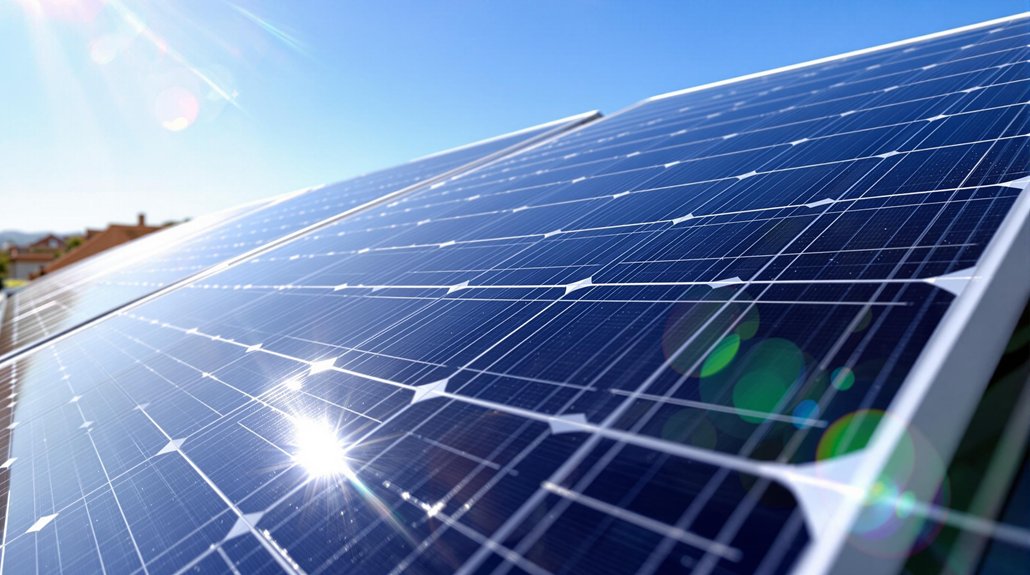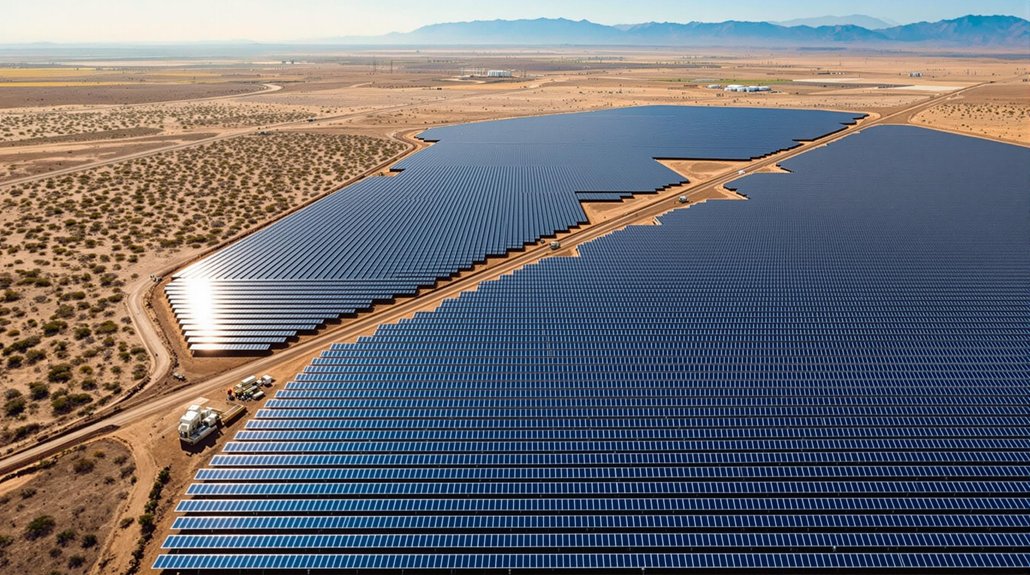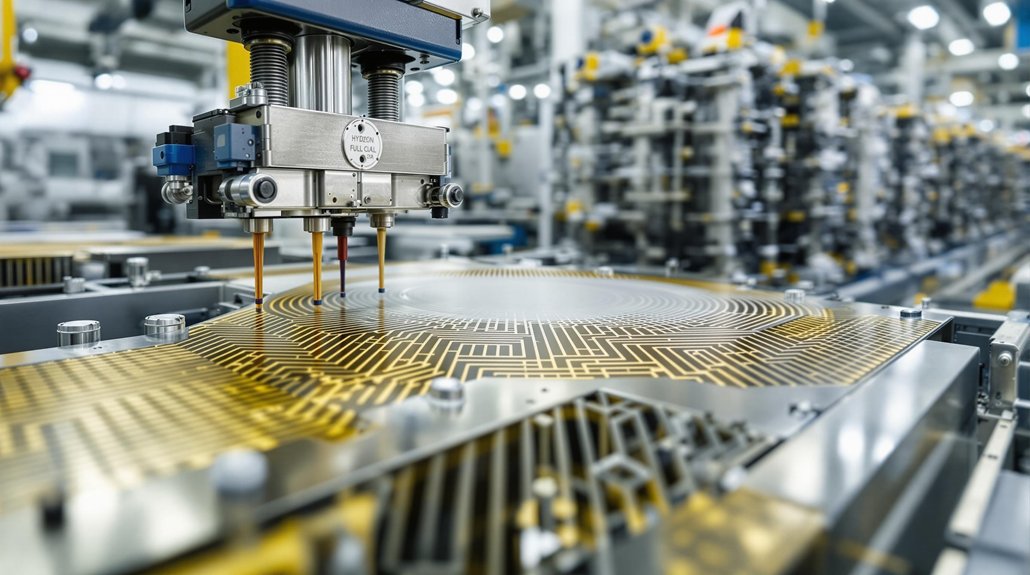Solar panels convert sunlight into electricity through the photovoltaic effect. When sunlight hits the silicon cells in panels, photons knock electrons loose from atoms, creating electron-hole pairs. An electric field at the p-n junction drives these electrons in one direction, generating direct current. Metal contacts collect this flow, and an inverter transforms it into usable alternating current for homes. The entire system works silently, lasting 25-30 years with minimal maintenance.

Millions of homes across the world now harness the power of sunlight to generate electricity. Solar panels, mounted on rooftops or in fields, contain photovoltaic cells made primarily from silicon semiconductor materials. These cells consist of two layers—a negative (n-type) and positive (p-type) silicon layer—creating what scientists call a p-n junction.
The conversion process begins when sunlight strikes the solar cells. The cells are covered with an anti-reflective coating that maximizes light absorption. When photons from sunlight hit the solar cells, they knock electrons loose from the silicon atoms. This creates “electron-hole pairs” within the material. The electric field at the p-n junction forces these freed electrons to move in one direction, creating an electric current.
Sunlight liberates electrons from silicon atoms, creating an electric field that drives current through the solar cell.
Metal contacts on the top and bottom of each cell collect this flow of electrons. Multiple cells connected together in series and parallel form a solar panel. The panels are protected by tempered glass on top and a durable backsheet underneath, all framed in aluminum for mounting and structural support. Between the glass and solar cells, ethylene-vinyl acetate encapsulants provide essential protection from environmental factors while improving optical coupling.
Solar panels produce direct current (DC) electricity, but homes use alternating current (AC). An inverter solves this problem by converting the DC electricity to AC. The electricity then flows to the home’s electrical panel for immediate use. Any excess power can go back to the utility grid or into battery storage systems. This technology is increasingly replacing traditional coal-fired power plants as we move toward sustainable energy solutions. This shift represents a significant step in clean energy adoption, helping reduce carbon emissions while providing homeowners with more control over their electricity costs.
A typical solar panel converts 15% to 22% of the sunlight it receives into electricity. Various factors affect this efficiency. Panels work best in cool, sunny conditions. When it’s too hot, efficiency drops. Shade from trees or buildings also reduces output. Even on cloudy days, panels still produce electricity, just at lower levels.
Most modern systems include monitoring technology that tracks energy production in real time. This helps homeowners and technicians identify any performance issues. Regular cleaning to remove dust and debris helps maintain ideal electricity production throughout the system’s 25-30 year lifespan.
Frequently Asked Questions
How Long Do Solar Panels Typically Last?
Solar panels typically last 25-30 years on average, though some continue producing electricity for over 40 years.
They gradually lose efficiency at a rate of 0.5-0.8% annually. Most panels maintain 80-90% of their original output after 25-30 years.
Manufacturers commonly offer warranties guaranteeing at least 80% production capacity after 25 years.
Lifespan varies based on materials, installation quality, climate, and maintenance practices.
Do Solar Panels Work During Cloudy Days?
Yes, solar panels work during cloudy days, but they produce less electricity. On overcast days, panels typically generate 10-25% of their normal output.
Different technologies handle cloudy conditions better than others. Bifacial panels capture light from both sides, while thin-film panels perform well in diffuse light.
Despite frequent clouds, countries like Germany get significant power from solar energy. High-efficiency panels perform better in low-light conditions.
How Much Maintenance Do Solar Panels Require?
Solar panels require minimal maintenance.
They need cleaning 2-4 times per year using mild soap and water. Annual professional inspections are recommended.
Regular cleaning can improve efficiency by 3-5%, while dirty panels may lose up to 25% efficiency. Maintenance needs increase in dusty or polluted areas.
System performance should be monitored monthly, and panels should be checked after severe weather events.
What Happens to Excess Electricity Produced by Solar Panels?
Excess electricity from solar panels flows into the power grid through net metering systems. Homeowners receive credits on their utility bills for this surplus energy.
Alternatively, the extra power can be stored in batteries for nighttime use or during outages. Some people use excess electricity to charge electric vehicles or power appliances during sunny periods.
In the UK, the Smart Export Guarantee pays homeowners for electricity they send back.
Are There Tax Incentives for Installing Solar Panels?
Significant tax incentives exist for solar panel installations.
The federal government offers a 30% Solar Investment Tax Credit through 2032. This credit applies to equipment and installation costs with no maximum amount.
Many states provide additional benefits, including tax credits, rebates, and property tax exemptions.
Thirty-eight states also have net metering policies, allowing homeowners to sell excess electricity back to the grid, further reducing costs.









